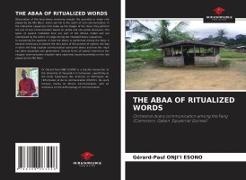Read more
Observation of the Fang dowry ceremony reveals the essential or major role played by the Mbi Ntum, whom we link to the realm of oral communication. In the interactive sequences that make up the stages of the ritual, they perform the use of oral communication based on verbal and non-verbal discourse. The types of speech mobilized here are part of the African model and are reproduced by the actors on stage during the ritualized dowry sequences. In answering the question of how the dowry is performed among the Fang, it became necessary to explore the very basis of the practice of speech, the way in which the Fang ritualize communication during the dowry and how this ritual has been actualized over generations. Several forms of speech inherent to this singular communication situation were observed, based essentially on the role played by the Mbi Ntum.
About the author
Dr Gérard Paul ONJI'I ESONO is a teacher-researcher at the University of Yaoundé II in Cameroon, specifically at the Ecole Supérieure des Sciences et Techniques de l'Information et de la communication (ESSTIC). His work focuses mainly on African Communication, with an emphasis on the Anthropology of Communication.

